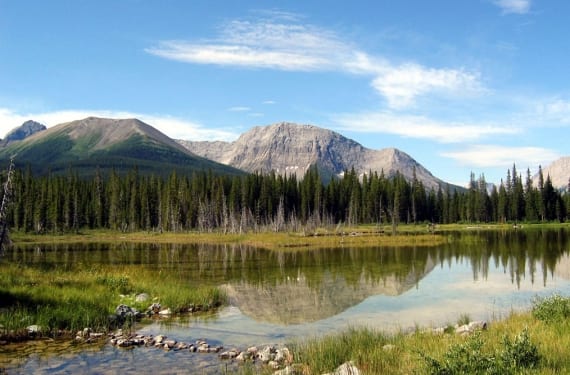
Canadian Subartic Lakes
The decrease in precipitation in the form of snow observed in recent years in the subarctic zones Canada has led to a worrying drying out of the Lake District.
This has been the conclusion reached by some researchers from Laval University, Wilfrid Laurier University, Brock University and the University of Waterloo in a study published a few weeks ago on the official page of the scientific journal Geophysical Research Letters. Revealing one more proof, if they are still not enough of the obviousness of the global warming.
The researchers came to this conclusion after studying 70 lakes near Old Crow, Yukon and Churchill, Manitoba, Canada. Most of the lakes studied were less than a meter deep. According to the analyzes carried out, more than half of the lakes located in relatively flat areas and surrounded by bushes, show signs of desiccation.
This problem comes mainly from a decrease in the water coming from the thaw. For example, from 2010 to 2012 the average winter rainfall in Churchil decreased by 76 mm compared to the averages recorded between 1971 and 2000. The drying of some lakes, which became visible to the naked eye for the first time in 2010, was even more pronounced in 2013.
For these types of lakes, precipitation in the form of snow represents between 30% and 50% of the annual water supply. The type of drying observed by researchers has been unprecedented in the last 200 years. Furthermore, the isotopic analyzes carried out on the phytoplankton remains accumulated in the lake beds show that the lakes have maintained the aquifer balance for 200 years.
This stability was suddenly interrupted a few years ago. If the trend of dry summers and winters with less snow continues, as predicted by the climate model, many of the shallow sub-arctic lakes could eventually dry out completely. It is difficult to predict all the repercussions of the loss of this habitat, but it is true that the ecological consequences would be significant.
Snowmelt is a crucial source of water for many sub-arctic lakes, but climate models predict that precipitation in the form of snow will decline in some regions, with significant ecological consequences. In this article, three parameters are used, such as isotopic data of lake water together, the gradients of terrestrial vegetation cover (from open tundra to closed forests) and the topographic relief to identify the lakes that are vulnerable to desiccation under conditions of low meltwater runoff in two sub-arctic landscapes - The Old Crow Plains, Yukon, and the Hudson Bay Shoals, Manitoba, Canada.
The lakes located both in shallows and in open tundra basins show a systematic compensation between paleoclimatic indicator measurements of lake water oxygen isotopes (δ18O) over multiple sampling campaigns, deduced from cellulose found in recent surface deposits. This compensation is attributed to the intense evaporation enriched in 18O that responds to a lower than average snow water flow in recent years.
Notably, many lakes were close to complete drying out during the mid-summer of 2010, which followed a winter with low precipitation in the form of snow. Based on the paleoimnological records of these types of lakes, the extremely dry conditions of 2010 may not have occurred in the last 200 years. These conclusions feed the concern that a decrease in the flow from melting snow will lead to extensive drying out of shallow lakes in this type of landscape.
Further information: WWF concerned about the speed and intensity of climate change, Arctic ice disappearing at a record rate, The worrying disappearance of ice in the Arctic
Sources: Geophysical Research Letters